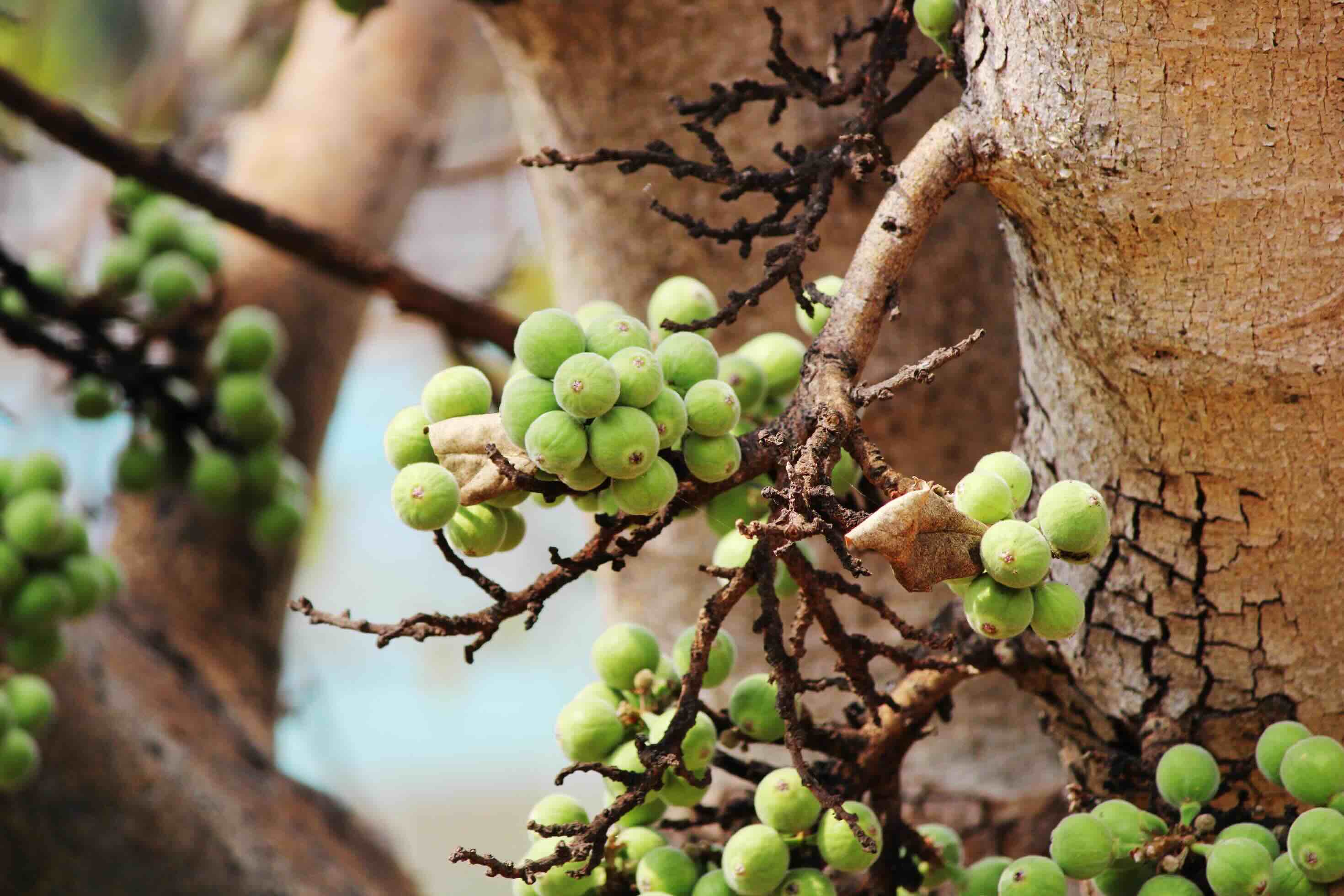
Cluster figs, also known as Ficus racemosa, are fascinating trees with a rich history and unique characteristics. Ever wondered why they’re called cluster figs? Cluster figs grow in bunches directly on the trunk and branches, making them look like nature’s own fruit bouquet. These trees are native to Australia, Southeast Asia, and the Indian subcontinent. They play a significant role in traditional medicine and local ecosystems. Did you know that their fruit is not only edible but also a favorite among wildlife? From their intriguing pollination process involving tiny wasps to their cultural significance in various regions, cluster figs are more than just ordinary trees. Ready to learn more? Let's dive into 25 captivating facts about these remarkable trees!
What is a Cluster Fig?
Cluster figs, also known as Ficus racemosa, are fascinating fruits with a rich history and numerous uses. These figs grow in clusters directly on the trunk and branches of the tree, making them unique among other fig species.
-
Cluster figs are native to Australia, Southeast Asia, and the Indian subcontinent.
-
The scientific name for the cluster fig tree is Ficus racemosa.
-
These figs grow directly on the trunk and branches, a phenomenon called cauliflory.
Nutritional Value of Cluster Figs
Cluster figs are not just interesting to look at; they are also packed with nutrients. They offer a variety of health benefits, making them a valuable addition to any diet.
-
Cluster figs are rich in dietary fiber, aiding digestion.
-
They contain essential vitamins like Vitamin A, Vitamin B, and Vitamin C.
-
These figs are a good source of minerals such as potassium, calcium, and iron.
Medicinal Uses of Cluster Figs
Traditional medicine has long recognized the healing properties of cluster figs. They are used in various treatments and remedies.
-
In Ayurveda, cluster figs are used to treat diabetes.
-
The bark of the cluster fig tree is used to treat skin diseases.
-
Cluster figs have anti-inflammatory properties, making them useful for treating wounds and infections.
Cultural Significance of Cluster Figs
Cluster figs hold a special place in various cultures and religions. They are often associated with myths, legends, and rituals.
-
In Hinduism, the cluster fig tree is considered sacred and is often associated with the god Vishnu.
-
The tree is mentioned in ancient Indian texts like the Ramayana and the Mahabharata.
-
In some cultures, the tree is believed to be a symbol of fertility and prosperity.
Environmental Impact of Cluster Fig Trees
Cluster fig trees play a significant role in their ecosystems. They provide food and shelter for various animals and help maintain ecological balance.
-
The trees are a vital food source for many birds and mammals.
-
Cluster fig trees help in soil conservation by preventing erosion.
-
They provide habitat for various insects and small animals.
Culinary Uses of Cluster Figs
Cluster figs are not just medicinal; they are also used in various culinary dishes. Their unique flavor makes them a favorite ingredient in many recipes.
-
In India, cluster figs are used to make a traditional dish called "Anjeer ki Sabzi."
-
The figs can be dried and used as a sweetener in desserts.
-
They are often used in making jams and preserves.
Growing and Harvesting Cluster Figs
Growing cluster fig trees can be a rewarding experience. They are relatively easy to cultivate and can thrive in various climates.
-
Cluster fig trees prefer well-drained soil and plenty of sunlight.
-
They can be grown from seeds or cuttings.
-
The trees are usually harvested twice a year, in the spring and fall.
Interesting Facts About Cluster Figs
There are many intriguing aspects of cluster figs that make them stand out. Here are some lesser-known facts about these unique fruits.
-
Cluster figs are also known as "goolar figs" in some regions.
-
The tree can grow up to 30 meters tall.
-
The figs are often used in traditional ceremonies and rituals.
-
Cluster fig trees can live for over 100 years, making them a long-lasting addition to any landscape.
The Final Bite
Cluster figs, or Ficus racemosa, pack a punch with their nutritional value and medicinal properties. These fruits, often found in tropical regions, offer a unique taste and a host of health benefits. From boosting digestion to enhancing skin health, cluster figs are a powerhouse of goodness. Their antioxidant properties help fight free radicals, while their fiber content aids in maintaining a healthy gut.
Not just a treat for the taste buds, cluster figs also play a significant role in traditional medicine. They’re used to treat various ailments, showcasing their versatility. Whether you’re munching on them fresh or incorporating them into dishes, cluster figs are a fantastic addition to your diet.
So next time you spot these little wonders, give them a try. Your body will thank you for it!
Was this page helpful?
Our commitment to delivering trustworthy and engaging content is at the heart of what we do. Each fact on our site is contributed by real users like you, bringing a wealth of diverse insights and information. To ensure the highest standards of accuracy and reliability, our dedicated editors meticulously review each submission. This process guarantees that the facts we share are not only fascinating but also credible. Trust in our commitment to quality and authenticity as you explore and learn with us.
